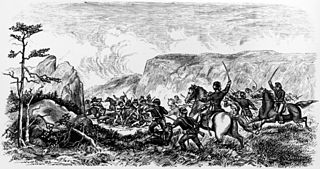 W
WThe Battle of Ash Hollow, also known as the Battle of Blue Water Creek or the Harney Massacre, was an engagement of the First Sioux War, and fought on September 2 and 3, 1855 between United States Army soldiers under Brig. Gen. William S. Harney and a band of the Brulé Lakota along the Platte River in present-day Garden County, Nebraska. In the 20th century, the town of Lewellen, Nebraska, was developed here as a railroad stop.
 W
WDuring the Crimean War (1853–1856), a naval campaign was fought in the Sea of Azov between the Royal Navy and the French Navy against the Russian Navy between 25 May–22 November 1855. British and French warships struck at every vestige of Russian power along the coast of the Sea of Azov. Except for Rostov and Azov, no town, depot, building or fortification was immune from attack and Russian naval power ceased to exist almost overnight. Contrary to established images of the Russian War, here was a campaign which was well-planned, dynamically led and overwhelmingly successful. The British authorities, significantly, issued the bar "Azoff" to the British Crimean War Medal, thus acknowledging the services of those who waged the most successful operations against the Russians during the war of 1854-1856. The bar was awarded only to the Royal Navy, together with units of the Royal Marines present during the campaign. The unauthorised French clasp, reading Mer d'Azoff , was worn by sailors of the French Navy.
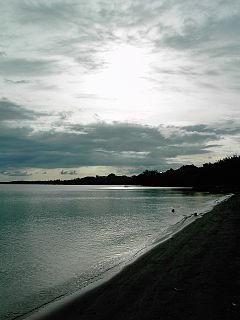 W
WThe Battle of La Virgen occurred on the 3rd of September, 1855, at La Virgen, Nicaragua. It was part of the Legitimist efforts to resist the newly arrived force of William Walker, who had the support of the fierce opponents of the Legitimists, the Democrats. After a hard-fought but one-sided skirmish, Walker's forces emerged victorious, giving the cause of the invading Filibuster army legitimacy, and inspiring many new volunteers to join his force.
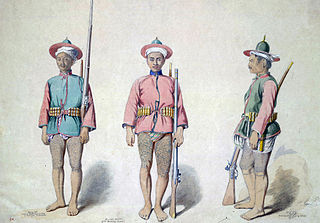 W
WThe Burmese–Siamese War of 1849–1855 was a war between the Burmese Konbaung Dynasty and the Siamese Rattanakosin Kingdom, the last of twenty wars fought between the Burmese and the Siamese between the 16th and 19th centuries. The war was the result of attempts by the Siamese to recapture much of the land they had lost to the Burmese in previous wars, as well as make reality their claims in the trans-Salween region of Myanmar that had been contested for hundreds of years. After heavy fighting, the Burmese drove the Siamese out of Shan territory, ending realistic Siamese hopes of reclaiming the territory.
 W
WThe Battle of the Chernaya was a battle by the Chornaya River fought during the Crimean War on August 16, 1855. The battle was fought between Russian troops and a coalition of French, Sardinian and Ottoman troops. The Chornaya River is on the outskirts of Sevastopol. The battle ended in a Russian retreat and a victory for the French, Sardinians and Turks.
 W
WThe Dominican Independence War gave the Dominican Republic autonomy from Haiti on February 27, 1844. Before the war, the island of Hispaniola had been united under the Haitian government for a period of 22 years when the newly independent nation, previously known as the Captaincy General of Santo Domingo, was unified with Haiti in 1822. The criollo class within the country overthrew the Spanish crown in 1821 before unifying with Haiti a year later.
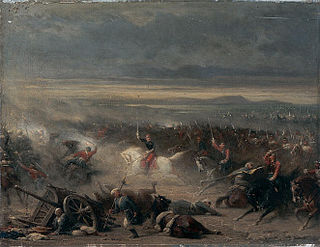 W
WThe Battle of Eupatoria was the most important military engagement of the Crimean War on the Crimean theatre in 1855 outside Sevastopol.
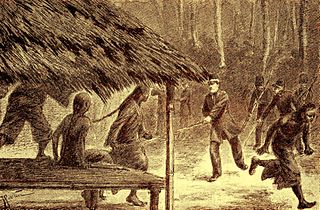 W
WThe expedition against the Chinese in Montrado (1854–1855) was a punitive expedition of the Royal Netherlands Indies Army against Chinese rebels in Montrado (Borneo).
 W
WThe first Fiji expedition undertaken by the United States occurred in October 1855 during the civil war on the islands. In response to the alleged arson attacks on the American commercial agent in Lautoka, Viti Levu, the navy sent a warship to demand compensation for the attack from Seru Epenisa Cakobau, the Vunivalu of Bau and self-proclaimed Tui Viti.
 W
WThe Battle of the Great Redan was a major battle during the Crimean War, fought between British forces against Russia on 18 June and 8 September 1855 as a part of the Siege of Sevastopol. The French army successfully stormed the Malakoff redoubt, whereas a simultaneous British attack on the Great Redan to the south of the Malakoff was repulsed. Contemporary commentators have suggested that, although the Redan became so important to the Victorians, it was probably not vital to the taking of Sevastopol. The fort at Malakhov was much more important and it was in the French sphere of influence. When the French stormed it after an eleven-month siege that the final, the British attack on the Redan became somewhat unnecessary.
 W
WThe Jicarilla War began in 1849 and was fought between the Jicarilla Apaches and the United States Army in the New Mexico Territory. Ute warriors also played a significant role in the conflict as they were allied with the Jicarillas. The war started when the Apaches and Utes began raiding against settlers on the Santa Fe Trail. Eventually, in 1853, the American army retaliated which resulted in a series of battles and campaigns that ended in 1854 when a large military expedition managed to quell most of the violence. However, some minor skirmishing continued into 1855.
 W
WThe Battle of Kaba was fought at Kaba, Fiji, in 1855 between self proclaimed Fijian Tui Viti (King) Cakobau and his enemies from Rewa and Bau. In 1853, Cokobau had previously attempted to take the rebel positions at Kaba, in which he was brutally defeated. This time though Cakobau was supported by a strong fleet from Tonga, sent by Tu'i Tonga (King) Taufa'ahau of Tonga and Enele Ma'afu, governor of the Tongan population in Fiji. The battle was a major victory for Cakobau, thanks mainly to his Tongan allies, and cemented his leadership over Fiji. It also, however, underlined his dependency on the military power of Tonga, especially since Ma'afu remained in Fiji.
 W
WThe Battle of Kinburn, a combined land-naval engagement during the final stage of the Crimean War, took place on the tip of the Kinburn Peninsula on 17 October 1855. During the battle a combined fleet of vessels from the French Navy and the British Royal Navy bombarded Russian coastal fortifications after an Anglo-French ground force had besieged them. Three French ironclad batteries carried out the main attack, which saw the main Russian fortress destroyed in an action that lasted about three hours.
 W
WThe Battle of Malakoff was a French attack against Russian forces on the Malakoff redoubt and its subsequent capture on 8 September 1855 as a part of the Siege of Sevastopol during the Crimean War. The French army under General MacMahon successfully stormed the Malakoff redoubt, while a simultaneous British attack on the Redan to the south of the Malakoff was repulsed. In one of the war's defining moments, the French zouave Eugène Libaut raised the French flag on the top of the Russian redoubt. The Battle of Malakoff resulted in the fall of Sevastopol on 9 September, bringing the 11-month siege to an end.
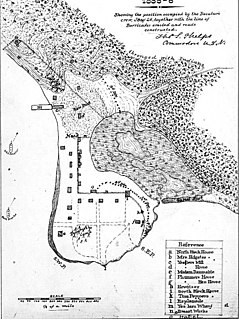 W
WThe Puget Sound War was an armed conflict that took place in the Puget Sound area of the state of Washington in 1855–56, between the United States military, local militias and members of the Native American tribes of the Nisqually, Muckleshoot, Puyallup, and Klickitat. Another component of the war, however, were raiders from the Haida and Tlingit who came into conflict with the United States Navy during contemporaneous raids on the native peoples of Puget Sound. Although limited in its magnitude, territorial impact and losses in terms of lives, the conflict is often remembered in connection to the 1856 Battle of Seattle and to the wrongful execution of a central figure of the war, Nisqually Chief Leschi. The contemporaneous Yakima War may have been responsible for some events of the Puget Sound War, such as the Battle of Seattle, and it is not clear that the people of the time made a strong distinction between the two conflicts.
 W
WThe Red Turban Rebellion of 1854–1856 was a rebellion by members of the Tiandihui or Heaven and Earth Society (天地會) in the Guangdong province of South China.
 W
WThe Santhal rebellion, commonly known as Santhal Hool, was a rebellion in present-day Jharkhand, in eastern India against both the British colonial authority and zamindari system by the Santhal people. It started on June 30, 1855 and on November 10, 1855 martial law was proclaimed which lasted until January 3, 1856 when martial law was suspended and the movement was brutally ended by troops loyal to the British. The rebellion was led by the four Murmu Brothers - Sidhu, Kanhu, Chand and Bhairav.
 W
WThe Siege of Kars was the last major operation of the Crimean War. In June 1855, attempting to alleviate pressure on the defence of Sevastopol, Emperor Alexander II ordered General Nikolay Muravyov to lead his troops against areas of Ottoman interest in Asia Minor. Uniting disparate contingents under his command into a strong corps of 25,725 soldiers, 96 light guns, Muravyov decided to attack Kars, the most important fortress of Eastern Anatolia.
 W
WThe siege of Sevastopol lasted from October 1854 until September 1855, during the Crimean War. The allies landed at Eupatoria on 14 September 1854, intending to make a triumphal march to Sevastopol, the capital of the Crimea, with 50,000 men. The 56-kilometre (35 mi) traverse took a year of fighting against the Russians. Major battles along the way were Alma, Balaklava, Inkerman, Tchernaya, Redan, and, finally, Malakoff. During the siege, the allied navy undertook six bombardments of the capital, on 17 October 1854; and on 9 April, 6 June, 17 June, 17 August, and 5 September 1855.
 W
WThe Battle of Suomenlinna was fought on 7–8 August 1855 between Russian defenders and a joint British/French fleet during the Åland War. It was a part of the Crimean War.
 W
WThe Battle of the Leotung was a British victory against an overwhelming fleet of Chinese pirate ships. In 1855 the Royal Navy launched a series of operations into the Gulf of Leotung and surrounding area to suppress piracy, several battles were fought and hundreds of pirates were killed.
 W
WThe Battle of Toppenish Creek was the first engagement of the Yakima War in Washington. Fought on October 5, 1855, a company of American soldiers, under Major Granville O. Haller, was attacked by a band of Yakamas, under Chief Kamiakin, and compelled to retreat. The battle occurred in Yakima Valley, 113 miles northwest of Fort Walla Walla, along Toppenish Creek and was a major victory for Native American forces.
 W
WThe Battle of Ty-ho Bay was a significant naval engagement in 1855 involving the United Kingdom and United States against Chinese pirates. The action off Tai O, Hong Kong was to rescue captured merchant vessels, held by a fleet of armed war-junks. British and American forces defeated the pirates in one of the last major battles between Chinese pirate fleets and western navies. It was also one of the first joint operations undertaken by British and American forces.
 W
WThe Battle of Union Gap, or the Battle at Union Gap, was the second engagement of the Yakama War, fought on November 9 and 10, 1855. It began when a large force of about 700 American soldiers, under Major Gabriel J. Rains, discovered Chief Kamiakin's village of around 300 braves and several women and children, along the Yakima River. In the following two-day battle only one "non-combatant" was killed by accident and the Yakama men were forced to retreat with their women and children.
 W
WThe Yakima War (1855-1858) was a conflict between the United States and the Yakama, a Sahaptian-speaking people of the Northwest Plateau, then part of Washington Territory, and the tribal allies of each. It primarily took place in the southern interior of present-day Washington. Isolated battles in western Washington and the northern Inland Empire were sometimes separately referred to as the Puget Sound War and the Palouse War, respectively. This conflict is also referred to as the Yakima Native American War of 1855.